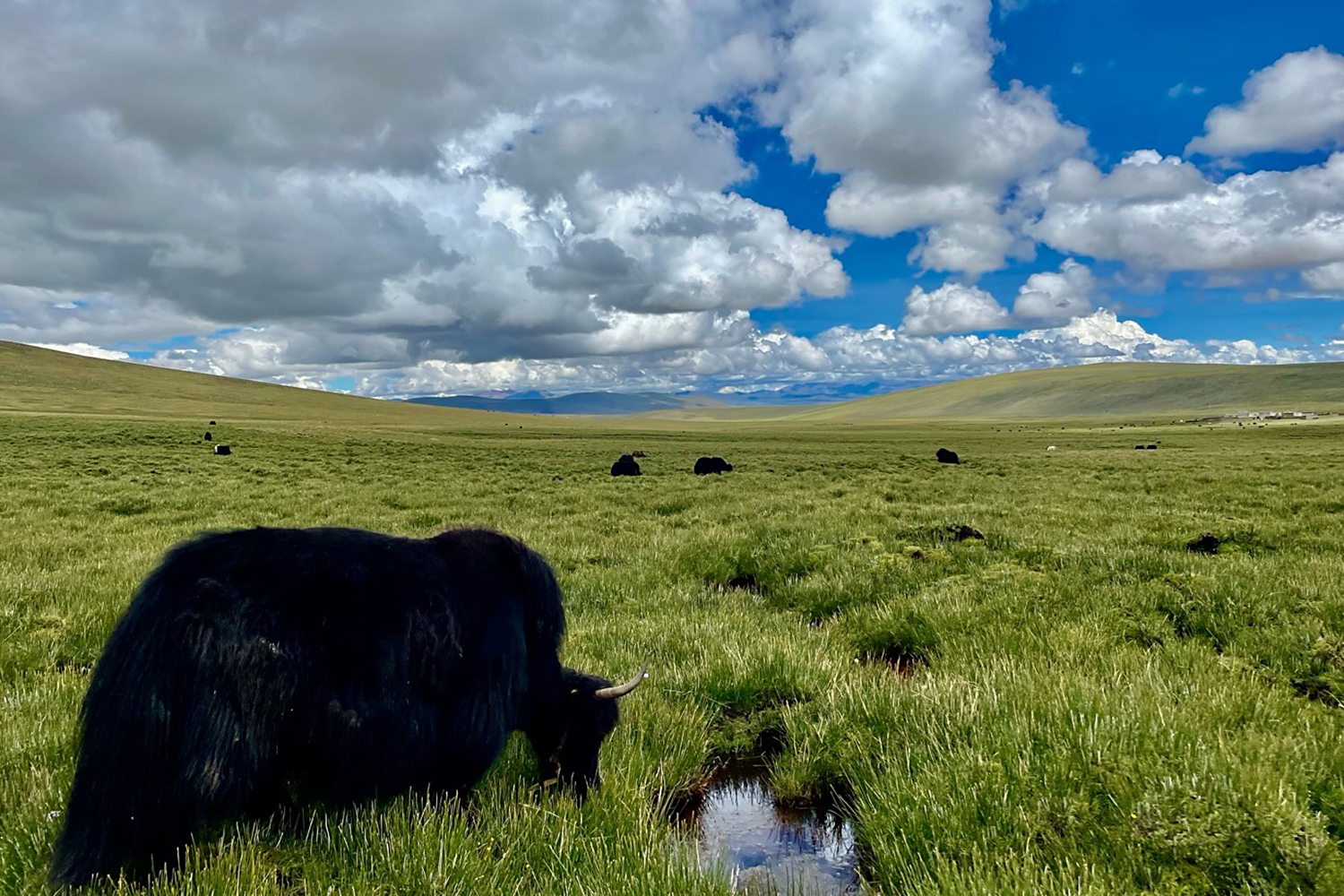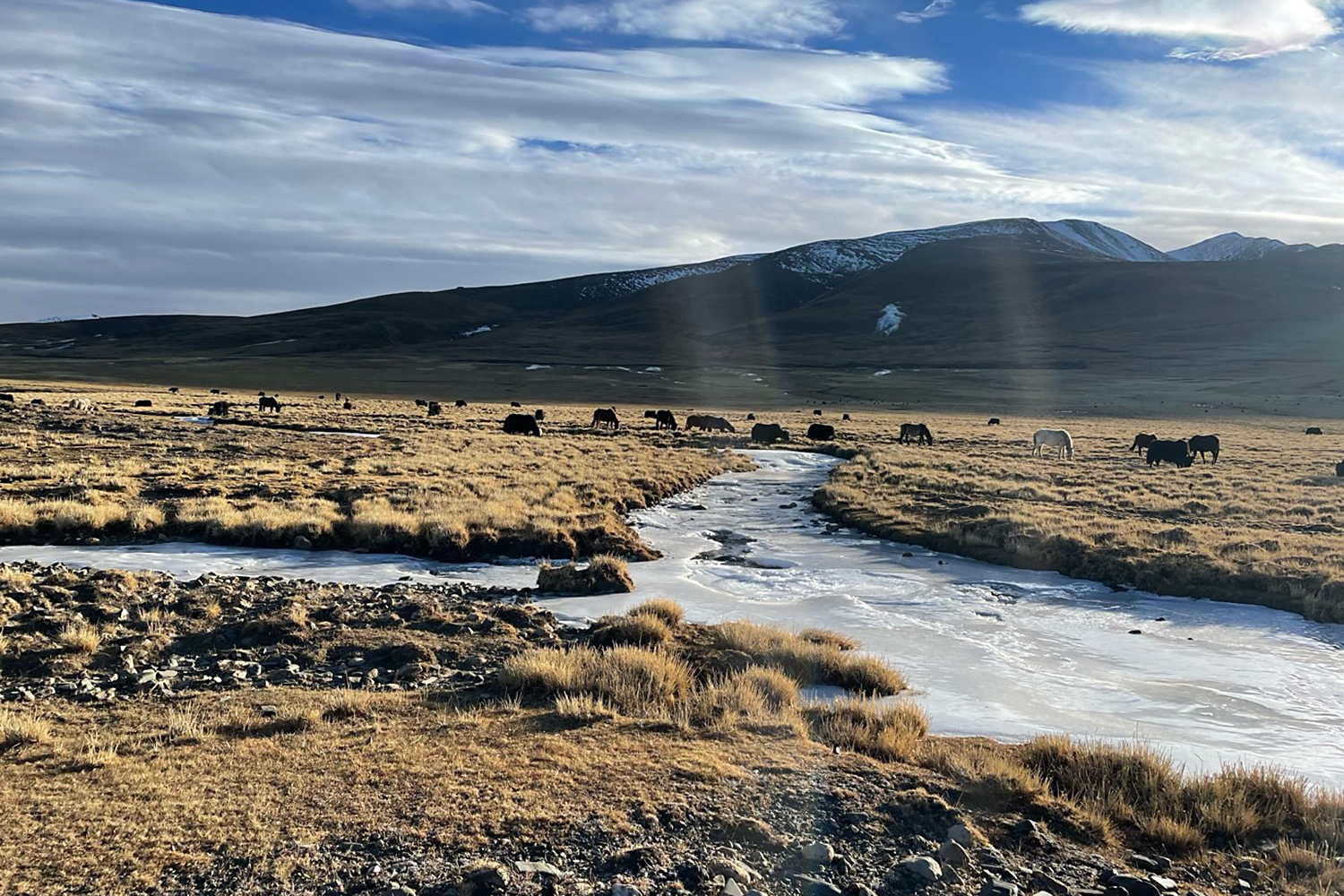Is the Third Pole really getting greener? Why yak herders and remote sensing specialists come to different conclusions
The effects of climate change on the grasslands of the Tibetan Plateau, also known as the “Third Pole”, are the focus of intensive scientific research. With the help of satellite remote sensing, experts are observing an increasing greening of the region, which is evaluated positively. At the same time, however, local yak herders are reporting a deterioration of the grassland. How does this fit together? An interdisciplinary team from the Technical University of Braunschweig has investigated this question. Their collaboration was made possible by the TransTiP Research Training Group.
The initial aim of the study was to find out which of the two contradictory observations – greening or degradation – was true. However, it soon became clear that this question was too short-sighted. The central realisation: both groups make correct observations and draw comprehensible conclusions – albeit based on different evaluation criteria. This difference explains the seemingly contradictory statements. How this realisation came about – and what we can learn from it – is the subject of the study by Petra Steffen, Siran Liang and Aida Taghavi Bayat.
Different perspectives
The doctoral students in anthropology, ecology and remote sensing collected, compared and analysed various data sets, but their comparisons didn’t resolve the question. Both parties appeared to be correct. Then, instead of trying to “correct” one dataset with the other, they ended up focusing on a new question: How did each of the groups involved arrive at their respective assessments? Therefore they employed a valuation studies approach to understand the presuppositions, values and ways of knowing of each group.
The study shows: While remote sensing data, as it is used to study the Tibetan Plateau, primarily documents the temporal and special extent of vegetation, the yak herders assess the quality and quantity of the feed for their animals. Even though the green area seen from space is growing, plant composition, vitality and height on the ground changes in a negative way.
Between remote sensing and field studies
This discrepancy also points to a deeper problem: “In the discussion about environmental change, natural scientists, scholars from the humanities and social sciences and herders take on very different roles and positions,” says ecologist Petra Steffen. “Studies show that the latter are often seen as laypeople, even though they observe their environment precisely over long periods of time.”
The data provided by the two groups is fundamentally different: quantitative, large-scale, remotely collected data sets are contrasted with a small number of qualitative accounts obtained on site. Both forms of knowledge have their justification – and it is only when they interact that a more complete picture emerges.
Another aspect is the cost factor. Remote sensing data can be accessed more cheaply than elaborate field studies can be conducted. These differences reinforce a methodological and epistemic imbalance. The temptation is therefore great to look for the “right” answer instead of understanding the respective perspectives, according to the scientists. In view of the size and inaccessibility of the Tibetan Plateau, remote sensing undoubtedly offers valuable insights – but it also plays a powerful interpretative role, which harbours risks.
Environmental changes in context
“A reductionist approach, as it is commonly applied in environmental research in natural sciences, can lead to a problematic simplification – especially when interpretive power, data hierarchies (qualitative vs. quantitative, small vs. large amounts) and uneven financial resources confound the discourse,” explains Petra Steffen.
According to the authors, in order to counteract such simplifications, it is necessary to integrate different forms of knowledge and to consider environmental changes in context. One possible way is not to reject the contradictory accounts of marginalised groups, but to include them as part of a more comprehensive understanding. “This could not only lead to a deeper understanding of the interactions between nature and society, but also contribute to a fairer, more pluralistic future on the Tibetan Plateau,” the authors of the study are certain.
Lessons learnt from interdisciplinary collaboration
The path to joint publication was challenging for the research team. The researchers gained key insights from their own collaboration and the publication of an interdisciplinary article in a specialist journal that involved reviewers from the natural sciences as well as the humanities and social sciences:
“The structure, language and style are very different. We repeatedly revised, discarded and re-inserted sections. Terms that are considered colloquial in the natural sciences have a central meaning in the humanities. The weighting of content also differs significantly: in natural science publications, the authors usually take a back seat to the research, whereas in anthropological texts, the subjective perspective of the researchers is explicitly reflected. Reflexivity is a methodological component there, whereas in the natural sciences it is hardly ever provided for.”
A plea for more diversity of perspectives
Specialist journals generally assume that their readers have in-depth specialist knowledge. However, this is not automatically the case for interdisciplinary articles. It was therefore necessary to explain more terms and provide more background information than usual – a process that took a lot of fine tuning.
The search for a suitable journal also proved difficult – it had to be open to interdisciplinary approaches, both linguistically and structurally. During the revision process, it also became clear how easily misunderstandings can arise when different specialist cultures clash.
The interdisciplinary collaboration has opened up new perspectives for the researchers – and changed their view of their own scientific work in the long term. “We suggest using the methodological approach of this study as a basis for a more nuanced understanding of perceived or true interdisciplinary contradictions. Writing for an interdisciplinary audience gave us the opportunity to reflect on our own assumptions as well as the limits and possibilities of our specialisms. Even though we can’t integrate this study into our dissertations, we wouldn’t want to have missed it.”


